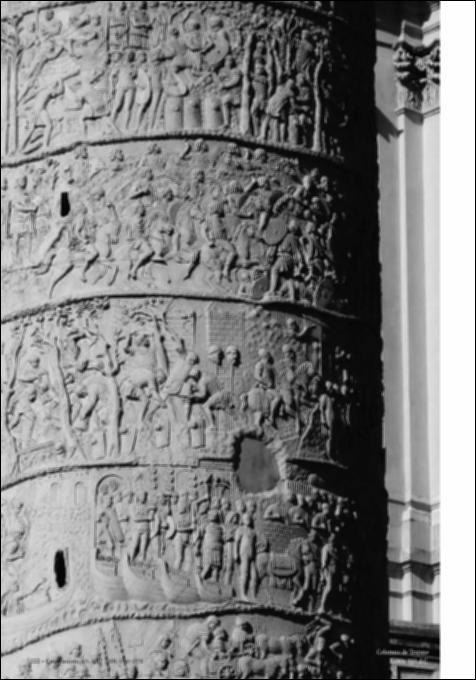Please use this identifier to cite or link to this item:
http://hdl.handle.net/10637/11893La espiral como vórtice imaginario de la arquitectura
| Title: | La espiral como vórtice imaginario de la arquitectura The Spiral as Imaginary Vortex in Architecture |
| Authors: | Cano-Lasso Pintos, Diego Escribano, Carmen Garro, Juan Carlos Tarrés, Juan Victoria, Susana |
| Keywords: | Espiral.; Vórtice.; Imaginario.; Laberinto.; Trazado.; Crecimiento.; Logarítmico.; Teodoro.; Spiral.; Vortex.; Imaginary.; Labyrinth.; Trace.; Fibonacci.; Growth.; Logarithmic.; Theodorus. |
| Abstract: | La espiral es un vórtice imaginario, un torbellino de impulsos y pasiones
que traza complejos itinerarios. Itinerarios introvertidos o expansivos, de
extensión limitada o de crecimientos logarítmicos ilimitados e infinitos.
La imaginación, desarrollada en espiral o con la espiral, puede ser plataforma
de toda una clave de acción, incluso en la vida misma imbricada en
turbulentos sentimientos y relaciones que pueden llevar hasta el crimen.
Pero en este artículo nos centramos en la espiral y la arquitectura.
A lo largo del tiempo se han levantado edificios como interpretación
directa del trazado y significado del símbolo de la espiral. Sin embargo,
la arquitectura puede también releer esos trazados espirales para
inventar otras posibilidades de construir imaginarios. Veremos cómo,
pero antes haremos una introducción a la base de la investigación. En
las cuartas Jornadas Internacionales Matemáticas Everywhere, celebradas
en Castro Urdiales en junio de 2016, presentamos en primicia una nueva
espiral logarítmica que plantea innovaciones matemático-geométricas. La
comunicación se centraba en las leyes loxodrómicas de la espiral y en sus
formulaciones matemáticas. En este artículo hemos creído conveniente
asociar la espiral a los trazados arquitectónicos y por lo tanto, es un nuevo
enfoque que desarrolla otro artículo diferente que trata de sugerir la forma
de habitar, desplazarse y recorrer una concavidad. Tiene un doble objetivo:
la presentación de la nueva espiral y la aplicación de este tipo de trazados
a la arquitectura. Se analiza como a partir del trazado espiral determinados
arquitectos han construido imaginarios y relaciones entre ellos, fuentes
inspiradoras de nuevos trazados y relaciones. A spiral is an imaginary vortex, a whirlwind of impulses and passions that traces complex itineraries. Introverted or expansive itineraries, of limited extension or logarithmic growths, finite or infinite. The imagination, developed in spiral or with the spiral, can act as the platform for a complete action, including the complex realm of emotions and relationships that might lead to crime. Nevertheless, this article focuses only on the spiral in architecture. In history there are examples of buildings that have been erected as a direct interpretation of the trace and meaning of the spiral symbol. Nonetheless, architecture can also serve as a tool to reread those spiral traces and invent other possibilities of imaginary structures. We are going to analyze these, but first we are going to give an introduction to the base of this investigation: During the 4th International Convention Mathematics Everywhere, which took place in Castro Urdiales in July 2016, we presented for the first time a new logarithmic spiral that proposes mathematical and geometrical innovations. The communication focused on the loxodromic laws of the spiral and its mathematical formulations. In this article we have deemed important to link the spiral to the architectural traces and consequently it is a different article suggesting a new way of living, traveling and moving a concavity. Two goals: To present a new type of spiral and the application of these type of traces to architecture. It is analyzed how certain architects have constructed imaginaries and relations between them based in the spiral tracing, inspiring sources of new paths and relationships. |
| Description: | Artículo en colaboración con: Carmen Escribano, Juan Carlos Garro, José Rojo, Juan Tarrés, Susana Victoria En: Constelaciones. ISSN. 2340-177X. n. 5, 2017, pp 223-237 |
| URI: | http://hdl.handle.net/10637/11893 |
| Rights : | http://creativecommons.org/licenses/by-nc-nd/4.0/deed.es |
| Issue Date: | 1-May-2017 |
| Appears in Collections: | Núm. 5 (2017) |
Items in DSpace are protected by copyright, with all rights reserved, unless otherwise indicated.


